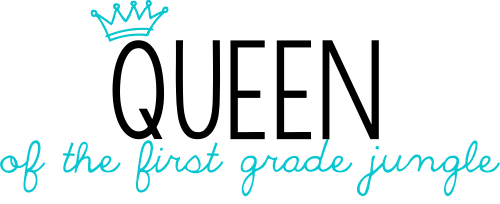Do your young learners have poetry journals?! Mine do and we love them.
The main question I have been asked in the past is what I put inside my journals and I created a resource to help answer that question. Most of the poems in our poetry journals are phonics poems, but I also am sure to include plenty of seasonal and holiday poems throughout the year.
I always had trouble finding poems that were appropriate for my first graders to decode on their own throughout the year, so I used to make up a few of my own. I decided this past year to make lots more, type them up, add some clipart and borders and voila! Here is my newest unit,
Phonics Poetry for Grade K-2!
If you want to see how I set up my poetry journals in the class, click the picture below to read my previous post on Blog Hoppin' AND snag one of the poems for free!
Inside my phonics poetry pack, there are 27 different phonics poems that focus on common word families and phonemes taught in Kinder, 1st grade, and the beginning of 2nd grade. Each word family or phoneme has a short, simple poem written by me, a practice page for students to record their words and sort real vs. nonsense words, and there is also a visualization sheet.
Here is a close up of each:
Poem: the above poem focuses on long vowel e, spelled /ee/. The set up of my poems are very similar so students can get used to them. Students read the poem many different times and ways and then glue it into their poetry journal and color in the picture.
Visualization Page: I find that poetry is the perfect time to teach visualization! Sometimes instead of the full-sized sheets, I will substitute the poem for that week with a visualization sheet. We still read the poem numerous ways and identify the words with the word family or phoneme we are learning that week. Instead of simply coloring in the clip art on the page, I have my students draw what the poem is about! It is a great way for me to see who can actually decode the poem and understand it.
Practice page: This is the page we complete after we read and illustrate our poems. It allows students to record some of the words they found in the poem as well as decode real and nonsense words with that word family/phoneme.
I also included a few sheets on how and when I use these sheets in my classroom:
My kids really love collecting these poems in their journal throughout the year and I allow plenty of time for students to read through their poetry journal. It also makes for quite the keepsake when they leave my classroom in June!
To see more, head over to view my Phonics Poetry unit on TPT and download the preview!
It is also on SALE through tomorrow night!
PS - as the year progresses I plan to add a few more phonemes, word families, and consonant blends to this unit. Feel free to let me know if there are ones you would like added! I just ask that you please be patient with me as THIS is what's going on in my life right about now:
...now THREE more days...






















































